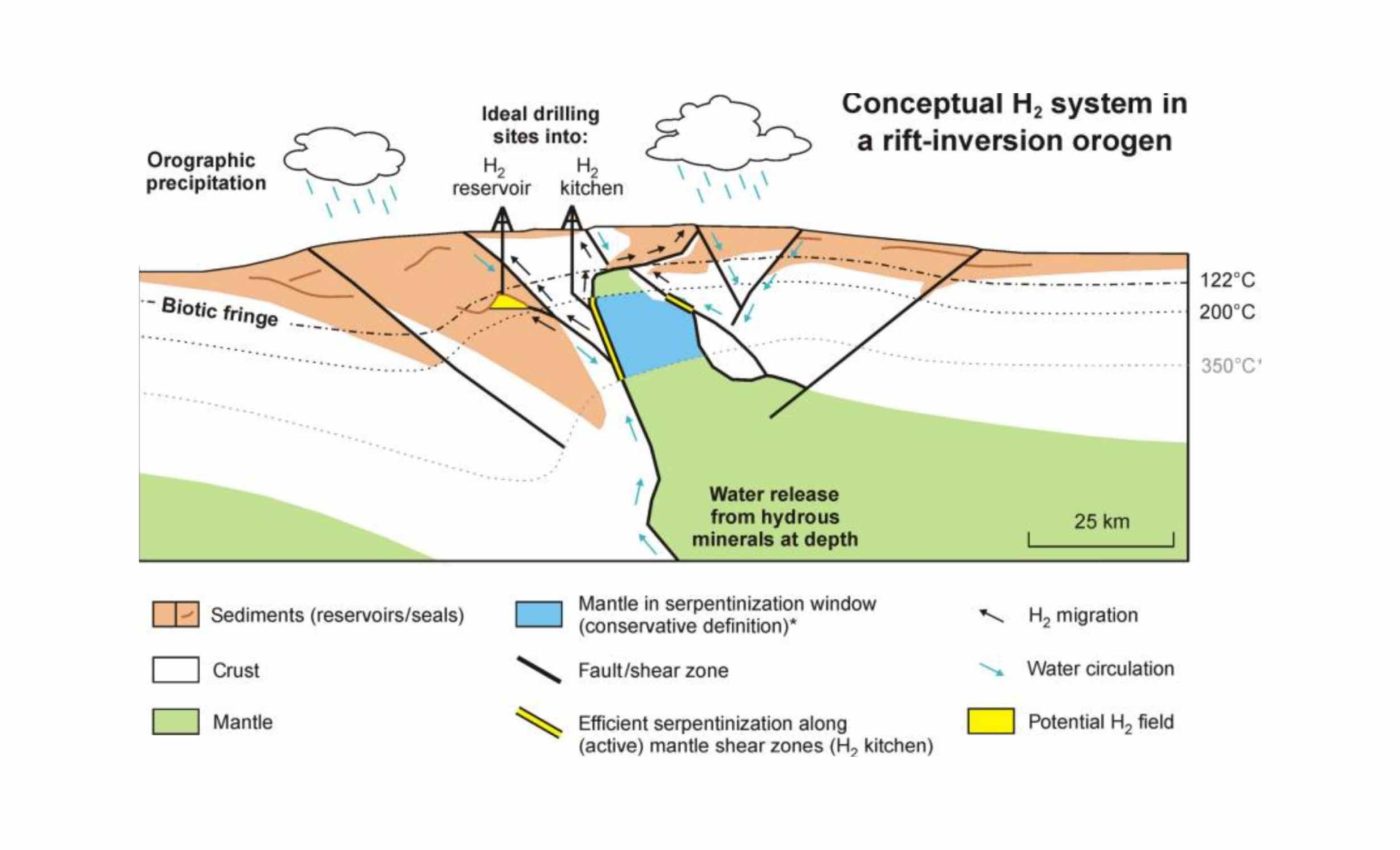
Massive hydrogen reserves discovered beneath Earth’s mountains
Scientists recently confirmed that large hydrogen reserves, formed around one million years ago, are hiding beneath certain mountain regions on Earth. Early investigations suggest these buried deposits could offer another option for keeping the lights on in the years ahead.
“We are at the threshold of introducing a revolutionary change in worldwide energy manufacturing by identifying these hydrogen resources,” stated Dr. Frank Zwaan, a geodynamic modeler at the GFZ Helmholtz Centre.
These findings hint at the possibility of tapping a cleaner form of energy that has been locked away in Earth’s crust.
Hidden supply of hydrogen
Many experts are focusing on how naturally occurring serpentinization generates hydrogen in high-pressure zones.
This chemical event happens when water interacts with minerals like olivine, deep underground, and releases hydrogen as a byproduct.
The mountain chains in question sit near areas of tectonic plate convergence, where layers of mantle rock are forced together. Such geological conditions favor the water-rock reactions that lead to hydrogen formation.
Clean energy gains
Scientists view hydrogen as a possible low-emission fuel. When burned, it produces water instead of harmful exhaust, which would cut the carbon footprint from older forms of energy.
Researchers see promise in sending this hydrogen into existing power grids, but more drilling data are needed before scaling up.
“Hydrogen may be much easier to reach than scientists thought,” stated Dr. Zwaan, referring to the renewed interest in these naturally created pockets.
A single site could potentially yield a steady stream of hydrogen for multiple uses, including local transportation.
Technical hurdles in using hydrogen
Some uncertainties remain. The cost of extraction depends on factors like reservoir depth, pressure, and the type of overlying rock.
Equipment designed for oil and gas may help in accessing deep hydrogen, but modifications will be required to handle the unique properties of this lighter gas.
Another challenge is ensuring that hydrogen does not escape through micro-cracks. Engineers have to confirm that well casings, seals, and pipelines are fully secure or risk losing the gas before it’s collected.
How hydrogen reserves forms
The hydrogen found beneath these mountains likely formed through chemical reactions that took place hundreds of thousands to millions of years ago.
In particular, radiolysis, the breakdown of water molecules by radiation from natural elements like uranium, thorium, and potassium, played a key role.
Because radiolytic hydrogen builds up over geologic timescales, the gas accumulates slowly but steadily. This process means that some of the reservoirs being studied today may have been forming since the time early mammals began evolving.
Understanding this timeline helps researchers estimate how much hydrogen is available – and how much more might still be trapped below the surface.
Health and safety
While hydrogen is not toxic, it is highly flammable. Production sites must therefore incorporate strict safety systems. Real-time sensors can monitor leaks, and storage vessels can be built to meet rigorous standards.
Some environmental researchers emphasize that thoughtful oversight is vital. They note that any large-scale underground operation needs to minimize disturbance to fragile ecosystems and water tables.
Global hydrogen reserves
Recent geological research points to similar deposits across multiple continents. Scientists note that the patterns of crust movement often repeat in different regions, suggesting additional hydrogen pockets may remain undiscovered.
These developments build on earlier work showing that small hydrogen seeps have existed for decades in locations such as sub-Saharan Africa. Now, new data analysis confirms that these mountain zones hold older gas accumulations, too.
Rift-inversion mountain ranges
Some of the richest hydrogen zones may lie beneath rift-inversion orogens – mountain ranges that formed when once-stretched crust was later squeezed back together.
This process pulls mantle rocks closer to the surface and sets up ideal conditions for serpentinization and hydrogen buildup. Areas like the Pyrenees, Alps, and Balkans are drawing increased attention for this reason.
Modeling studies show that hydrogen production during inversion phases can be up to 20 times greater than during the earlier rifting stage.
Combined with sediment layers that can act as natural traps, these zones present a high-value opportunity for locating stable underground reserves with commercial potential.
Potential applications
Some experts predict that, if extraction is managed well, natural hydrogen might become an additional option for fueling industry and homes.
That could help balance out spikes in demand for energy from renewables like solar and wind.
Others suggest that drilling for hydrogen could coincide with capturing byproducts such as helium, which has various commercial applications.
This combined approach might reduce overall project costs and speed up hydrogen market adoption.
Hydrogen reserves and the future
Industry groups, governments, and academic teams have started pilot programs in selected sites. They want to pinpoint how best to extract hydrogen safely from deeper layers without major disruptions to local communities.
Researchers are also developing more detailed maps of these ancient pockets by studying seismic data and refining exploratory techniques. They hope these improved methods will reveal additional locations where hydrogen is present.
The study is published in Science Advances.
—–
Like what you read? Subscribe to our newsletter for engaging articles, exclusive content, and the latest updates.
Check us out on EarthSnap, a free app brought to you by Eric Ralls and Earth.com.
—–













